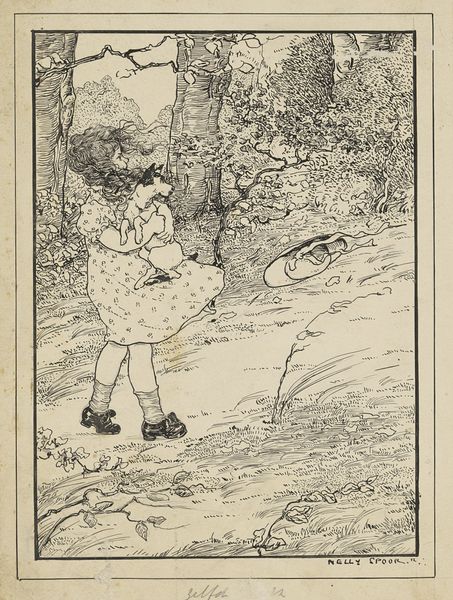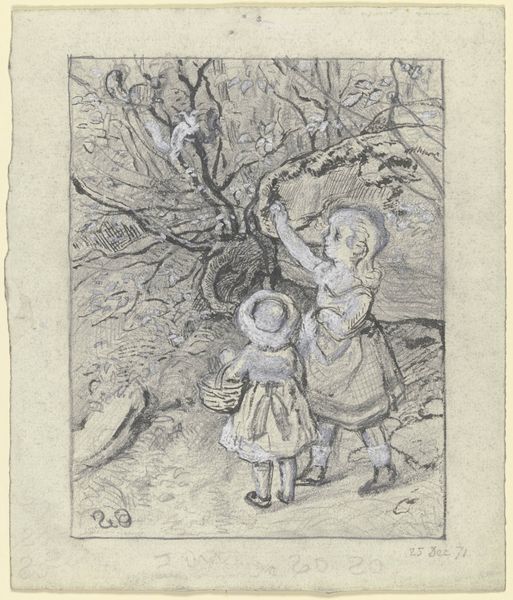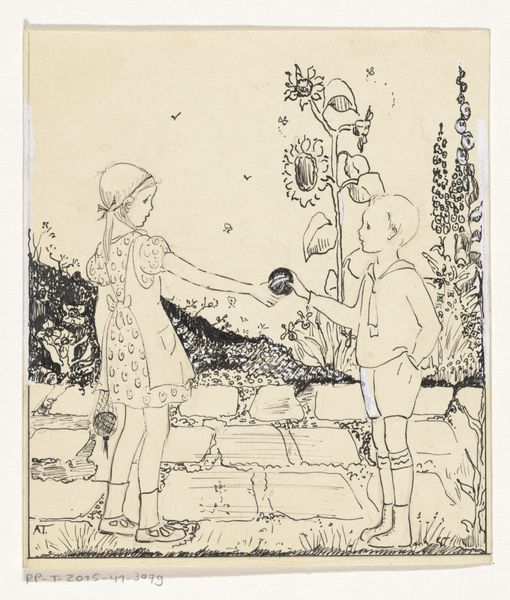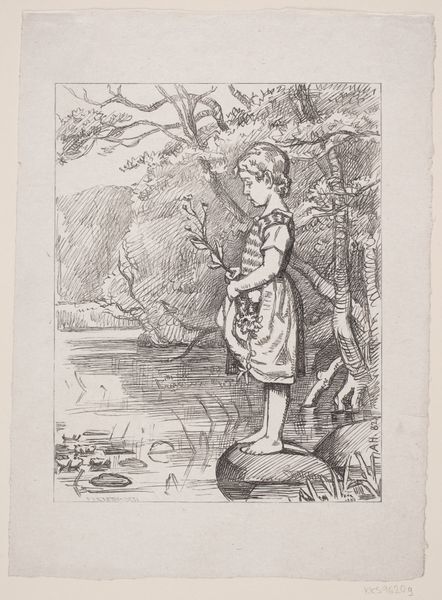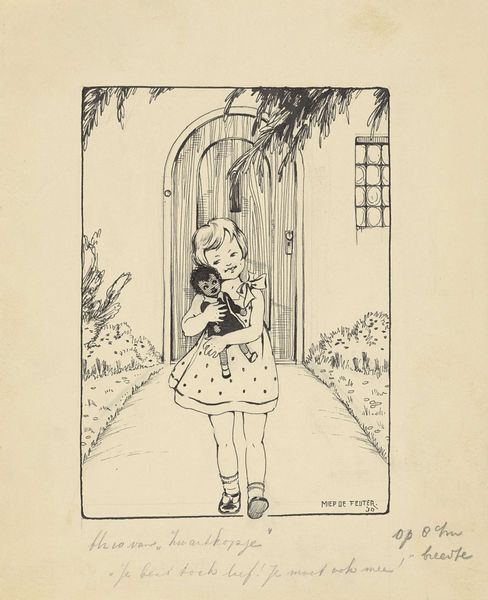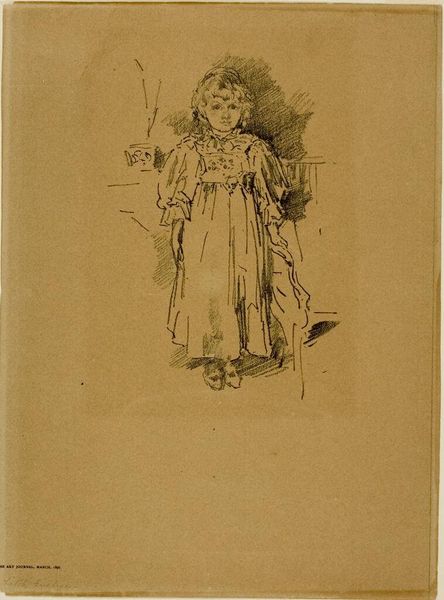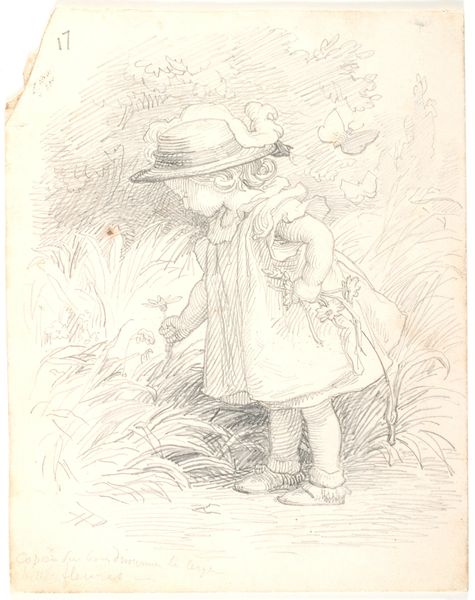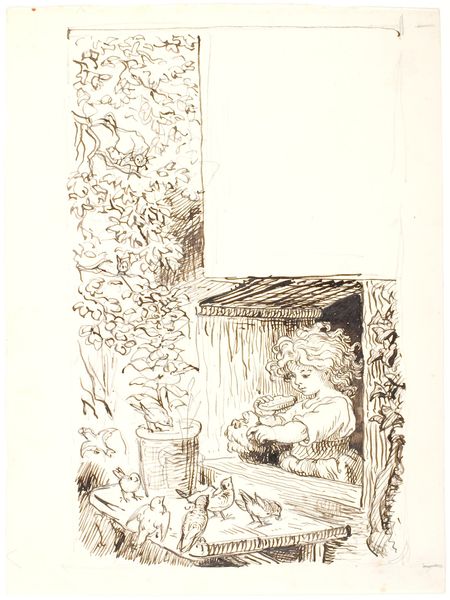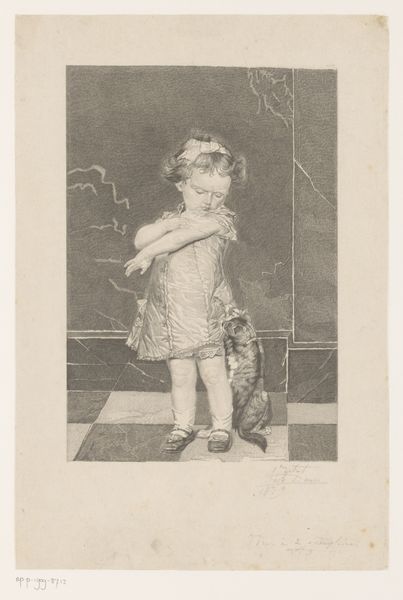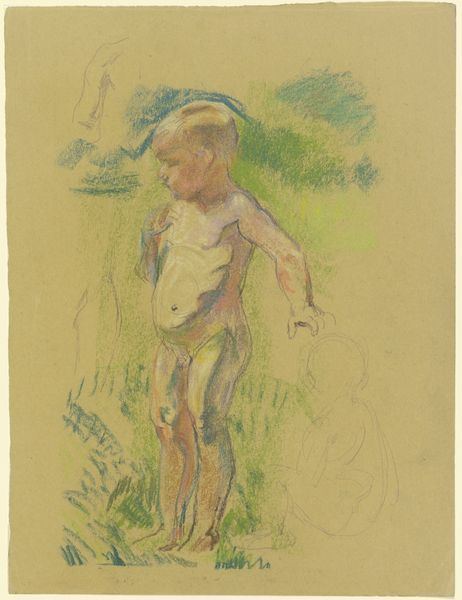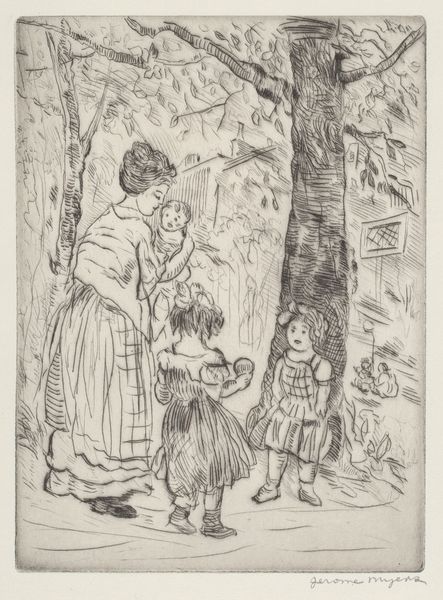
Dimensions: height 149 mm, width 97 mm
Copyright: Rijks Museum: Open Domain
Editor: So, this is A. Tinbergen’s “Meisje met bloemen,” dating from somewhere between 1925 and 1935. It's an ink and pencil drawing on paper. The style reminds me of a children's book illustration. What strikes you about it? Curator: The immediacy of the lines captures a particular sense of innocence, doesn’t it? The flowers, of course, immediately evoke the symbolic language we’ve built around them—a fleeting beauty, youth, perhaps even a memento mori subtly woven in. But notice how the girl offers a flower; does this shift the reading, perhaps toward a more optimistic symbolism related to gifts? Editor: I didn't think about that! I just saw a cute kid. What about the rest of the composition, though? I mean, there’s something almost naive about the drawing itself. Curator: Indeed. Look at the horizon line barely suggested. What’s interesting to me is how this deliberate simplicity acts as a mirror. Children often become symbolic of nostalgia or simpler times; does this resonate with your understanding? Editor: I can see that, a sort of constructed idea of childhood. Almost like the symbol of the girl is representing innocence that the artist is missing. Curator: Precisely. And isn’t that the key function of iconography, really? To tap into shared memories and project forward hopes, fears, or dreams for society to look back on. The girl could even suggest nature reclaiming urban life after a disaster; how does that reading sit with you? Editor: Woah. Okay, seeing that makes the drawing much darker. Now it seems much more thought out. Curator: Yes, drawings like this capture cultural memories of simpler times and hopes for future well-being in an immediate way. Editor: I will definitely think twice before I call a piece naive again!
Comments
No comments
Be the first to comment and join the conversation on the ultimate creative platform.

